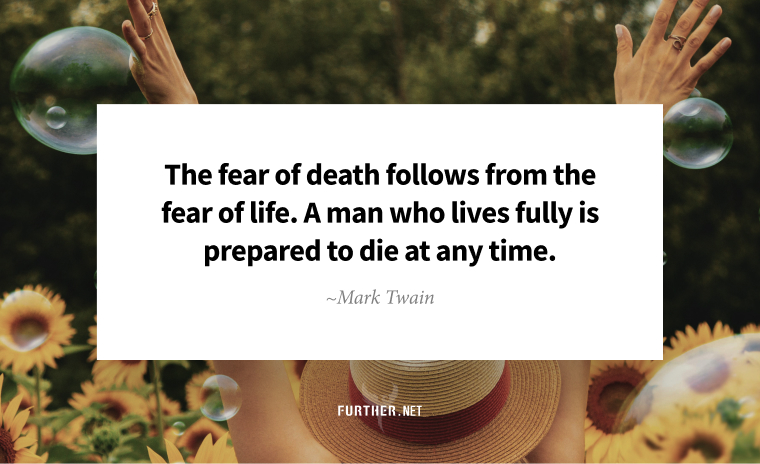
My mom used to quote Hemingway whenever we discussed someone’s untimely death:
Men are dying this year who have never died before.
Absurdly funny and so true. Yet even from the vantage point of middle age, where you think we’d be comfortable embracing our mortality, the reality is not so much. As happiness expert Arthur C. Brooks explains:
Death is inevitable, of course; the most ordinary aspect of life is that it ends. And yet, the prospect of that ending feels so foreign and frightening to us.
This is where the terror management theory comes from, which explains the fear of death is why we numb, distract, and dissuade ourselves from facing the inevitable. The paradox is, of course, that all that avoidance means we can’t fully embrace life.
Now’s the time to stop letting death kill your joy of living.
A Matter of Life and Death
The funny thing about death is it’s way more lethal in theory vs. in practice. Brooks points out that one of the most popular “coping” frameworks, Elisabeth Kübler-Ross’ model (denial, anger, bargaining, depression, and acceptance), is ultimately an exercise in continuous negativity and unrelenting grief.
From this, you might well conclude that distraction is indeed the best strategy — face death unless and until you have to?
But more recent research shows that making peace with death ahead of the curve isn’t so bad. Acceptance tends to increase over time, along with a sense of serenity.
Further, studies show that those who have faced their demise, either from a terminal illness or near-death experience, find themselves in a counterintuitive place: more positive, present, and engaged with personal growth.
Live It Up
As we’ve discussed before, making death a part of daily life to help demystify and defang it is an ancient practice. From the “memento mori” Stoic exercise where one “organizes each day as if it were a complete life,” to Buddhist monks practicing the maranasati meditation (“mindfulness of death”) and the Sufi practice of spending time in graveyards, there are myriad ways to make the experience of mortality tangible.
In our modern world, lifecycle transition specialist Kathy Arnos, author of Walking a Friend Home: A Practical Guide to Consciously Living & Dying, recommends taking action by creating a plan, including a death care directive and decisions about your remains. If that seems too heavy, you can start with Swedish death cleaning, where you pare down to the essentials long before you anticipate bouncing off this mortal coil.
One other practical exercise Brooks recommends:
On your birthday or an annual holiday, work out roughly how many you may have left and ask yourself whether you’re really spending your scarce time the way you want.
As you’ll find, taking simple steps toward a clear-eyed embrace of your mortality isn’t a dead end. In fact, it might be a new beginning.
You’re Going to Die. That’s a Good Thing. (The Atlantic gift article)
Walking a Friend Home: A Practical Guide to Consciously Living by Kathy Arnos
